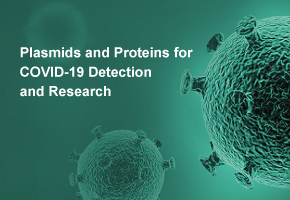RMB 3.506 Billion! Sales of China’s 3-Generation EGFR Inhibitor “Furmonertinib” Surge, Marking a New Turning Point for Targeted Therapies
By DengYueMed International Business Division
Today, DengYueMed shares key commercial insights into China’s EGFR small-molecule targeted therapy market with international buyers and distribution partners. Drawing on the latest publicly available data, we analyzed the sales trends of several domestic EGFR inhibitors — including Icotinib, Almonertinib, Furmonertinib, and Sunvozertinib — and combined them with recent developments in China’s regulatory, reimbursement, diagnostic, and clinical environments to provide market-oriented reference for global stakeholders.
Rapid Growth of Domestic EGFR Inhibitors
Public data reveal a clear upward trajectory for China’s third-generation EGFR inhibitors since 2021.
Taking Furmonertinib as an example:
l 2021 sales: RMB 236 million
l 2022: RMB 791 million
l 2023: RMB 2.012 billion
l 2024 (disclosed): RMB 3.506 billion
Meanwhile, China’s lung cancer treatment market continues to expand. According to Grand View Research, the market was valued at USD 2.18 billion in 2023, is projected to reach USD 2.47 billion in 2024, and is expected to grow at a compound annual rate (CAGR) of 13.7% from 2024 to 2030.
These figures demonstrate that China is becoming an increasingly vital link in the global pharmaceutical supply chain, especially in the areas of targeted therapy adoption, diagnostic accessibility, and commercialization efficiency.
Market Context: Clinical Demand and Regulatory Acceleration
Lung cancer, particularly non-small cell lung cancer (NSCLC), remains one of the most prevalent cancer types among both Chinese men and women. The EGFR mutation rate among Chinese NSCLC patients is significantly higher than the global average, giving EGFR inhibitors a strong clinical and commercial foundation in China.
On the policy side, the combination of expanded gene testing, enhanced drug evaluation efficiency, and mature reimbursement mechanisms has pushed EGFR inhibitors from the early introduction phase into a new era of independent R&D and rapid commercialization.
In 2024, China’s National Medical Products Administration (NMPA) approved 83 new drugs, representing a 12% year-on-year increase.
Meanwhile, updates to China’s National Reimbursement Drug List (NRDL) in 2024 saw 37% of newly listed drugs fall under oncology, with a 52% success rate within that category — reflecting policy-level support for innovative cancer therapies.
Sales Trends of Key Domestic EGFR Inhibitors (2021–2025)
Brand | Generic Name | Company | 2021 | 2022 | 2023 | 2024 (Public) | 2025 (As Available) |
Conmana | Icotinib | Betta Pharmaceuticals | 20.5 | — | — | ≈28.9 (2024 Revenue) | — |
Ameile | Almonertinib | Hansoh Pharma | >15 | >20 | — | ≈37 (Est.) | Continued Growth |
Aifusa | Furmonertinib | EQRx / Allist | 2.36 | 7.91 | 20.12 | 35.06 | Significant H1/H3 Growth |
Sulvoz | Sunvozertinib | Dizal Pharma | — | — | 0.91 | ≈4 (Est.) | Expanding in 2025 |
(Estimated figures are based on brokerage and industry reports, subject to data validation.)
The data illustrate that China’s third-generation EGFR inhibitors have entered a “multi-billion-yuan acceleration phase.”
This expansion is not linear — it is driven by a combination of new indication approvals, NRDL inclusion, testing accessibility, and channel strength.
Global Perspective: China’s Expanding Role in Targeted Therapy
From a global perspective, the EGFR inhibitor market is projected to grow at a CAGR of approximately 10.5% between 2025 and 2029 (Technavio).
As the world’s second-largest pharmaceutical market, China’s rapid adoption of genetic testing—particularly EGFR diagnostics—has unlocked new entry points for targeted therapy expansion.
Meanwhile, as reimbursement negotiations, volume-based procurement, and localized tendering systems become increasingly mature, China’s role in global pharmaceutical pricing and access dynamics is growing more influential.
For international pharmaceutical and distribution partners, China is no longer simply a market for generics or imported drugs — it is entering a new phase defined by independent innovation, rapid commercialization, and export orientation.
Global Collaboration Accelerates Under Policy Momentum
Based on these developments, DengYue identifies three major opportunities for global partners in the new era of China’s EGFR-targeted therapies:
l Early-Mover Advantage – As domestic third-generation EGFR drugs gain traction, international buyers can proactively align with Chinese manufacturers and products.
l Supply Chain Integration – Efficiency across testing, prescribing, inventory, and hospital delivery will become a decisive factor in competitiveness.
l Export Expansion – With commercialization pathways maturing, Chinese-made EGFR drugs are increasingly positioned for distribution across Asia, Latin America, and Africa.
This accelerated growth reflects the triple synergy of technology, industry, and policy.
Technologically, EGFR remains a globally significant NSCLC target.
Industrially, China’s innovation capacity continues to rise, with homegrown third-generation EGFR inhibitors rapidly achieving market access and reimbursement inclusion.
Policy-wise, the optimization of NMPA review processes, NRDL mechanisms, and companion diagnostics is driving synchronized growth.
Conclusion
Representing the forefront of small-molecule oncology innovation, EGFR inhibitors highlight how China’s pharmaceutical industry is entering a stage of independent R&D, rapid commercialization, and export-oriented globalization.
Domestic products are no longer limited to import substitution — they are emerging as globally competitive assets.
DengYueMed predicts that beyond 2025, the growth trajectory, cross-border partnerships, and distribution frameworks surrounding China’s EGFR inhibitors will become a key focus for the global pharmaceutical community.
- Like
- Reply
-
Share
About Us · User Accounts and Benefits · Privacy Policy · Management Center · FAQs
© 2025 MolecularCloud




